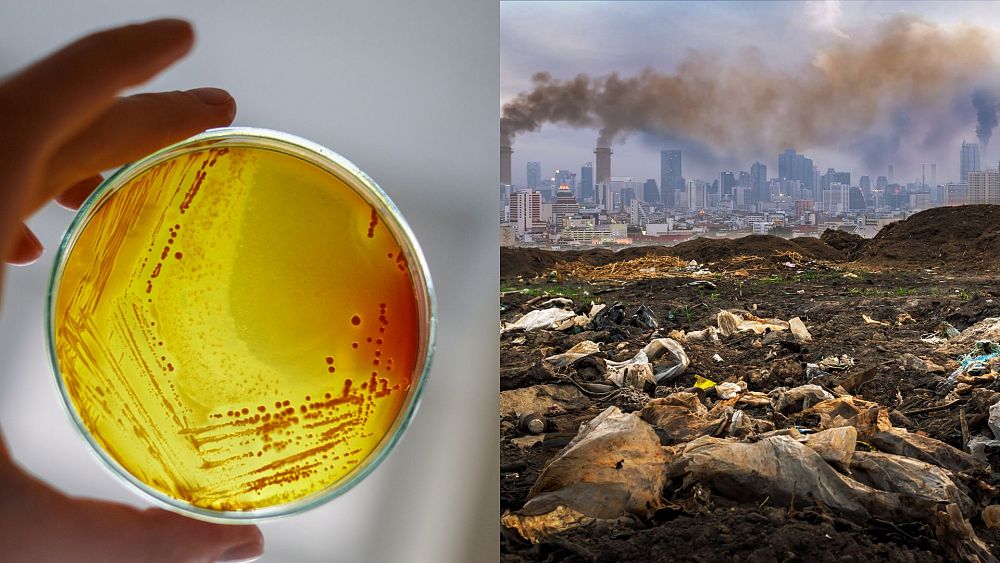
Inger Andersen is the Executive Director of the United Nations Environment Programme.
Antimicrobials save countless lives and protect vital economic sectors; they are, in effect, a super weapon. Without them, modern medicine would struggle to treat even mild infections in humans, animals, and plants.
However, a new report from the United Nations Environment Programme shows that pollution of the environment is diluting the effectiveness of antibiotics, antivirals, antifungals and antiparasitics.
The result? A crisis-level increase in antimicrobial-resistant superbugs and other insidious examples of antimicrobial resistance.
To limit the emergence and spread of antimicrobial resistance, we must cut environmental pollution off at source.
How big is the problem of antimicrobial resistance?
The World Health Organization lists antimicrobial resistance among the top ten threats to global health, and with good reason.
In 2019, an estimated 1.27 million deaths were directly attributed to drug-resistant infections globally. Almost 4.95 million deaths worldwide were associated with bacterial antimicrobial resistance.
Estimates suggest that, by 2050, up to ten million direct deaths could occur annually, equalling the 2020 rate of global deaths from cancer. In the next decade, the impacts of antimicrobial resistance on healthcare systems, productivity and agricultural production could result in a Gross Domestic Product shortfall of at least USD 3.4 trillion annually and push 24 million more people into extreme poverty.
Antimicrobial resistance is also an issue of equity. It is closely linked to poverty, lack of sanitation and poor hygiene, with the Global South worst hit. Antimicrobials are often used in pesticides: in some countries, 85 per cent of all pesticide applications on commercial farms and plantations are carried out by women – often working while pregnant or breastfeeding.
If we are serious about creating a fairer, safer world, tackling antimicrobial resistance must be near the top of the global agenda.
How do pollution and climate change contribute to antimicrobial resistance?
Three economic sectors profoundly influence antimicrobial resistance’s development and spread: pharmaceuticals and other chemicals manufacturing, agriculture and food, and healthcare. Municipal systems are also implicated. Leakage of antimicrobials into the environment through these pathways, for example through sewage, is allowing bacteria, viruses, parasites or fungi to become resistant to antimicrobial treatments to which they were previously susceptible.
The wider triple planetary crisis – of climate change, nature and biodiversity loss, and pollution and waste – is also linked to the development and spread of antimicrobial resistance.
Higher temperatures and extreme weather can be associated with increases in antimicrobial- resistant infections. Municipal solid waste landfills are prone to feral animal interaction and can contribute to the spread of antimicrobial resistance.
How can governments and industry beat antimicrobial resistance?
While the environment’s significance in AMR remains understudied, the new report points to clear further action that governments, industry and other key players can take now to stop leaking antimicrobials into the environment.
The pharmaceutical sector can strengthen inspection systems, change incentives and subsidies for implementing upgrades in the manufacturing process, and ensure adequate waste and wastewater containment and treatment.
The food and agriculture sector can limit the use of antimicrobials and reduce discharges to protect water sources from pollutants, resistant microorganisms and antimicrobial residue contamination. This sector should also avoid antibiotics that correspond to those used as a last resort in human medicine.
The healthcare sector can improve access to high-quality and sustainable water sources and sanitation, install hospital-specific wastewater treatment systems, and ensure the safe and sustainable use and disposal of antimicrobial medicines.

As around 56 per cent of wastewater is released into the environment with little or no treatment, and over 600 million people have access to poor or basic facilities, it is also crucial to improve integrated water management and promote water sanitation and hygiene.
These actions, and more outlined in the report, must be backed at the highest level: with national action plans, international standards, realignment of subsidies and investments, research and – above all – collaboration between sectors.
Adopting the ‘One Health’ approach – which recognizes that the health of people, animals, plants and the environment are interdependent – is particularly important to ensure that everybody is pulling in the same direction.
Significant political momentum has developed, including through the Global Leaders Group on Antimicrobial Resistance and the Quadripartite Alliance on One Health.
However, the threat is growing. We now need to see more high-level political engagement, more finance, more technical expertise and above all more action.
Investment in new and affordable antimicrobials and other preventative measures should grow, but reducing pollution will be essential to ensure that this super weapon retains its power.


